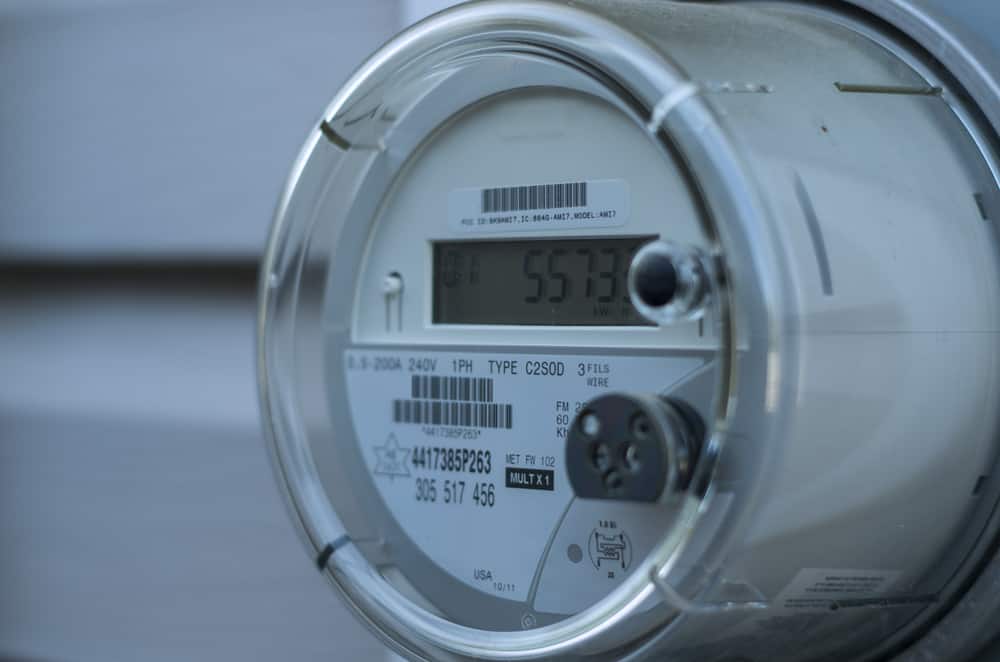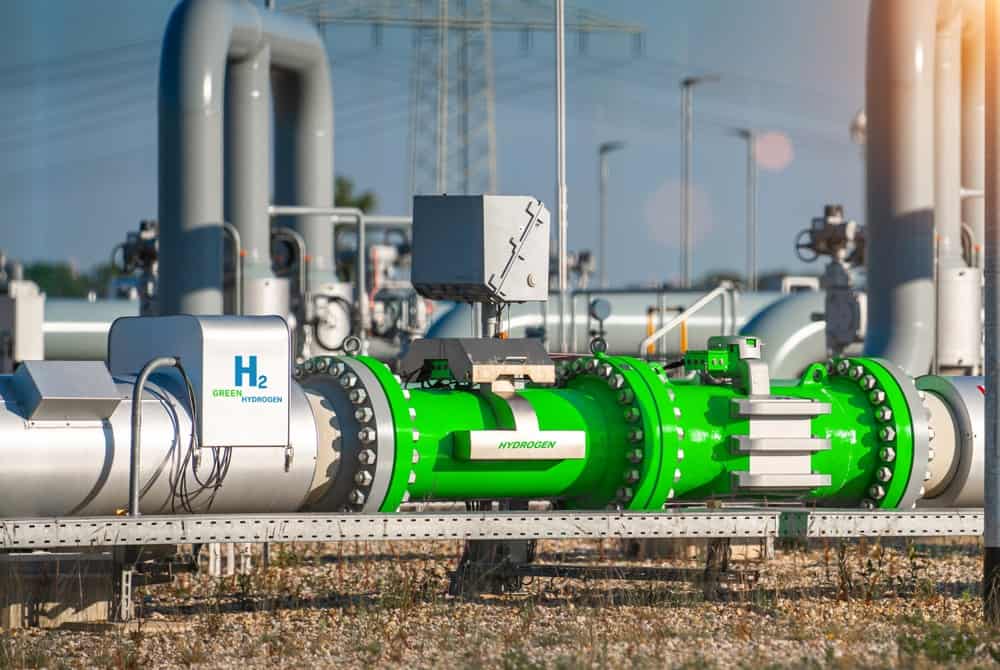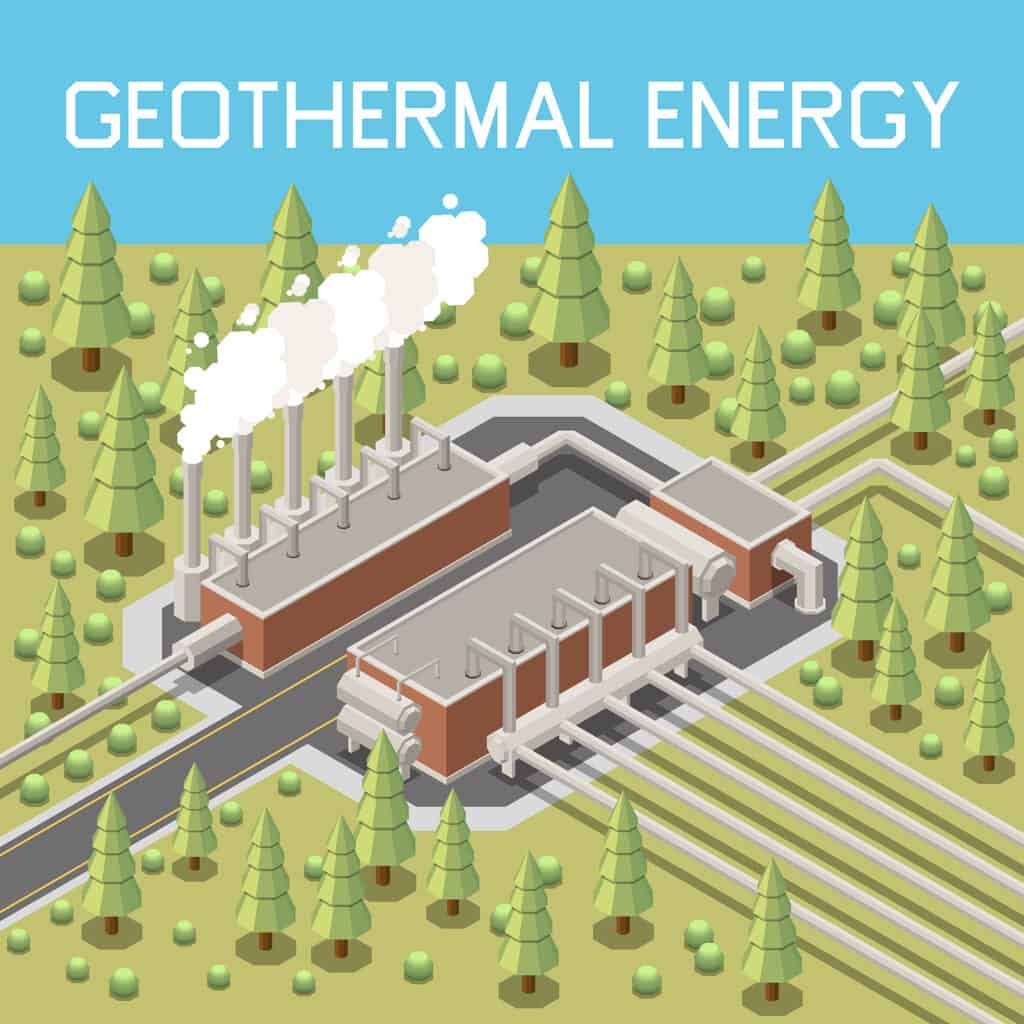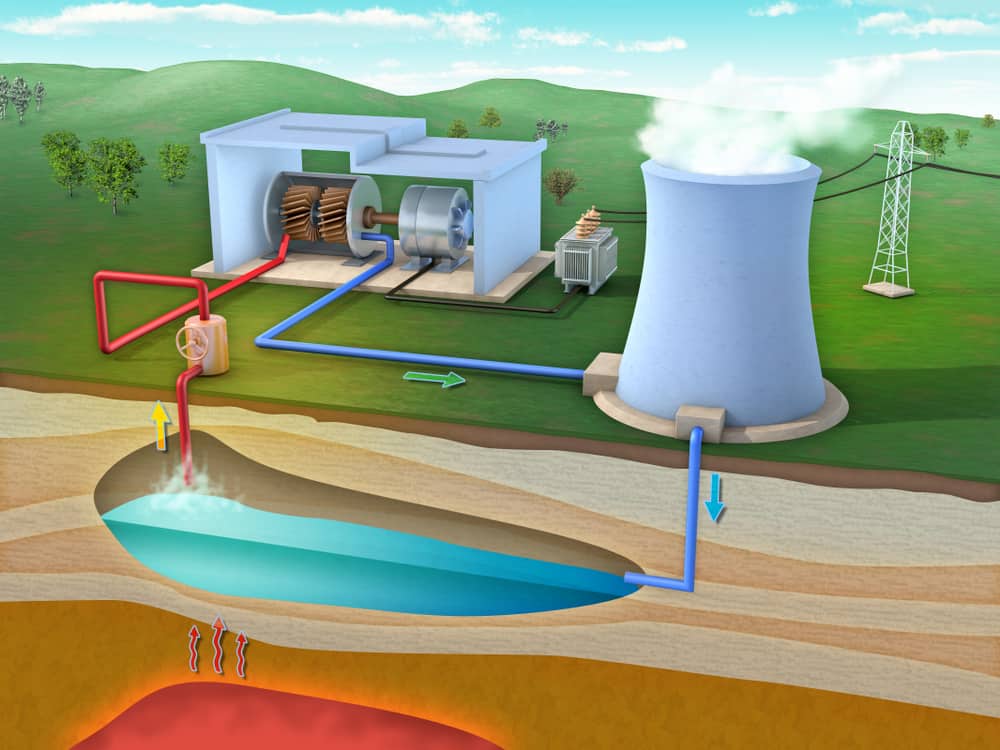Geothermal Installation 101: The Comprehensive Guide You Can't Miss
As a company seeking to enhance our corporate social responsibility and sustainability initiatives, we are considering geothermal installations as a viable option. Embracing renewable energy sources like geothermal not only allows us to reduce our environmental impact but also strengthens our reputation as an environmentally responsible organization. Geothermal energy, a sustainable and abundant resource, aligns perfectly with our commitment to a greener future.
By harnessing the earth's natural heat to generate energy, we can play a crucial role in preserving the planet's resources for future generations. Investing in geothermal technology showcases our dedication to sustainability and positions us at the forefront of environmentally conscious businesses. With geothermal installations, we can pave the way toward a more sustainable future while ensuring a reliable and constant energy supply for our operations.
What is Geothermal Energy?
Geothermal energy is a promising renewable energy source that has been gaining popularity in recent years due to its potential to provide clean and sustainable energy without releasing harmful greenhouse gases. This type of energy is harnessed by drilling deep into the earth's crust and extracting the heat energy that is stored in the rocks and fluids below the surface.
The heat energy in the earth's crust is a result of the radioactive decay of elements, and the earth's natural processes continuously replenish this energy, making geothermal energy a virtually limitless source of energy.
Geothermal systems typically consist of a network of pipes buried underground, through which a fluid is circulated to absorb the heat from the ground. This fluid then travels to a heat exchanger, where the heat is transferred to a working fluid such as water or steam, which is then used to generate electricity.
Alternatively, the heat can be directly used for heating and cooling purposes in homes and buildings, by circulating the fluid through a heat pump system.
One of the advantages of geothermal energy is its reliability and stability. Unlike wind and solar energy, which are subject to the vagaries of weather patterns, geothermal energy is available round the clock, every day of the year.
Moreover, geothermal ground loop installation have a long lifespan and can last for several decades with minimal maintenance, making them a cost-effective energy source in the long run.

How Does Geothermal Energy Work?
Geothermal systems work by taking advantage of the temperature difference between the earth's surface and the earth's core. The temperature of the earth's surface is influenced by the sun's radiation, while the temperature of the earth's core is influenced by the natural heat generated by the earth's radioactive decay.
To harness the heat energy from the earth's core, a geothermal system is used. The system consists of a heat pump, a ground loop, and a distribution system. The heat pump is the most important component of the system, as it is responsible for transferring the heat energy from the ground to the building.
The heat pump works by using the refrigerant cycle, which involves evaporating and condensing a refrigerant in a closed loop system. The refrigerant is evaporated in the ground loop, where it absorbs heat from the ground. The heated refrigerant is then pumped to the heat pump, where it is condensed, releasing the heat energy into the building.
The ground loop is a closed loop of piping that is buried in the ground and filled with a heat transfer fluid. The heat transfer fluid is typically a mixture of water and antifreeze, which helps to prevent freezing in cold climates. The ground loop can be installed vertically, in a borehole, or horizontally, in a trench. The size and layout of the ground loop depend on the size of the building and the amount of heat energy required.
Types of Geothermal Systems
Geothermal systems, renowned for their efficient and cost-effective attributes, have experienced a surge in popularity as a highly sought-after renewable energy source in recent years. These systems harness the Earth's natural heat to generate power and provide heating and cooling solutions for various applications. Let's explore some of the key types of geothermal systems in more detail:
- Direct Use Geothermal Systems: Direct use geothermal systems are among the simplest and oldest forms of geothermal energy utilization. They involve tapping into hot water reservoirs found within the Earth's crust and directly using the hot water or steam for various purposes. Such applications include district heating, greenhouse heating, hot water supply for residential and commercial buildings, and even industrial processes like crop drying and pasteurization. Direct use geothermal systems are highly effective and have been employed in geothermal-rich regions worldwide.
- Geothermal Heat Pumps (Ground-Source Heat Pumps): Geothermal heat pumps, also known as ground-source heat pumps, are widely used for both residential and commercial heating and cooling applications. These systems take advantage of the relatively stable temperatures found just a few feet below the Earth's surface to transfer heat between buildings and the ground. In the winter, the heat pump extracts heat from the ground and transfers it into the building to provide warmth. Conversely, during the summer, the system works in reverse, removing heat from the building and dissipating it into the cooler ground. This process offers significant energy savings compared to traditional heating and cooling systems, making geothermal heat pumps an attractive and environmentally friendly option.
- Enhanced Geothermal Systems (EGS): Enhanced Geothermal Systems (EGS) represent an exciting advancement in geothermal technology. Unlike conventional geothermal systems that rely on naturally occurring hot water reservoirs, EGS allows us to extract heat from areas with less naturally available geothermal resources. This is achieved by creating engineered reservoirs through hydraulic fracturing (fracking) or other stimulation techniques. By injecting water or other fluids into the rock formations, the heat is harnessed and can be utilized for power generation or direct use applications. EGS has the potential to greatly expand the geographic reach of geothermal energy and make it viable in regions previously deemed unsuitable.
- Binary Geothermal Power Plants: Binary geothermal power plants are a type of geothermal power generation that has gained prominence due to its efficiency and environmental benefits. These power plants work with lower temperature geothermal resources, which are more common but less suitable for conventional geothermal power plants. Binary systems use a secondary fluid with a lower boiling point than water, such as isobutane or pentane. The hot geothermal fluid heats the secondary fluid, causing it to vaporize and drive a turbine connected to an electricity generator. Binary geothermal power plants are more versatile and can be deployed in a broader range of geological settings.

Benefits of Geothermal Systems
Geothermal systems offer a plethora of benefits that make them a compelling and environmentally-friendly choice for meeting various energy needs. Here are some of the key advantages of geothermal systems:
Renewable and Sustainable
Geothermal energy is derived from the Earth's internal heat, which is continuously replenished by natural processes. Unlike fossil fuels, which are finite and contribute to greenhouse gas emissions, geothermal energy is a renewable and sustainable energy source that can be harnessed for generations to come.
Low Greenhouse Gas Emissions
Geothermal systems produce minimal greenhouse gas emissions compared to conventional energy sources like coal, natural gas, or oil. By tapping into the Earth's heat, geothermal loop installation power plants emit significantly lower levels of carbon dioxide (CO2) and other harmful pollutants, helping to combat climate change and reduce overall air pollution.
Energy Efficiency
Geothermal heat pumps are highly energy-efficient, capable of providing heating, cooling, and hot water with remarkable efficiency. They require less electricity to operate compared to traditional heating and cooling systems, resulting in substantial energy savings and lower utility bills for consumers.
Longevity and Reliability
Geothermal systems, particularly heat pumps, have a longer lifespan than many other heating and cooling systems. Properly installed and maintained geothermal systems can last for several decades, providing consistent and reliable energy for residential, commercial, and industrial applications.
Energy Independence
Geothermal energy is a domestically available resource, reducing reliance on imported energy sources. This energy independence enhances energy security and reduces exposure to fluctuating international fuel prices, making it an attractive option for countries seeking to diversify their energy portfolio.
Space Efficiency
Geothermal heat pumps eliminate the need for outdoor condenser units, as they utilize the stable temperatures underground. This frees up outdoor space, improves aesthetics, and reduces noise pollution associated with traditional air conditioning systems.
Low Operating Costs
Geothermal systems generally have lower operating and maintenance costs compared to conventional heating and cooling systems. Once the initial investment is recouped, users can enjoy long-term cost savings on energy bills due to reduced electricity consumption.
Versatility and Scalability
Geothermal energy can be used for a wide range of applications, from residential heating and cooling to district heating, greenhouse agriculture, industrial processes, and electricity generation. Its versatility makes it suitable for various settings, including urban areas and remote regions.
Reduced Water Consumption
Unlike some conventional power plants that require substantial amounts of water for cooling, geothermal power plants have minimal water consumption. This helps conserve precious water resources, particularly in water-stressed regions.
Geothermal Tourism
In regions with geothermal activity, such as geysers and hot springs, geothermal energy can also boost tourism and create economic opportunities, benefiting local communities and economies.
Steps to Install a Geothermal System
Step 1: Site Evaluation and Feasibility Assessment
The installation process of a geothermal system begins with a comprehensive site evaluation and feasibility assessment. Qualified technicians and engineers conduct a thorough examination of the property to gather crucial data. Factors such as the geological composition of the soil, its thermal conductivity, and the availability of groundwater are carefully analyzed. Additionally, the size and layout of the property, local climate patterns, and specific heating and cooling load calculations are taken into account. This meticulous evaluation ensures that the geothermal system is tailored to the site's unique characteristics and maximizes its efficiency.
Step 2: System Design and Customization
Based on the data gathered during the evaluation phase, the geothermal system is meticulously designed and customized. During this stage, the skilled design team collaborates with the property owner to understand their specific heating and cooling needs, as well as their long-term energy goals. The appropriate type of diy geothermal installation heat pump is selected, considering factors like the building's size, heating and cooling requirements, and budget constraints. Furthermore, the loop configuration is carefully planned to optimize performance and make the most of the available space.
Step 3: Ground Excavation and Loop Installation
With the system design in place, the installation crew proceeds with ground excavation and loop installation. Depending on the property's characteristics and design specifications, one of the following loop configurations will be employed:
1. Horizontal Loops: Trenches are dug at a specific depth, and high-density polyethylene pipes, containing a heat transfer fluid, are laid out horizontally. The pipes are then interconnected to form a closed-loop system.
2. Vertical Loops: For properties with limited space, vertical boreholes are drilled to a considerable depth. The heat exchange pipes are inserted into the boreholes, and the holes are sealed with grout to ensure thermal conductivity.
3. Pond/Lake Loops: Where available, bodies of water can serve as an efficient heat exchange medium. Coils of pipes are submerged in the water to harness its stable temperature.
4. Open Loops: In areas with an ample supply of high-quality groundwater, open-loop systems can be used. Water is drawn from a well, passed through the heat pump for heat exchange, and then discharged back into the ground or a separate well.
Step 4: System Integration and Commissioning
After the loop installation, the geothermal system is integrated into the building's heating, cooling, and hot water distribution system. The heat pump is connected to the loops, and all electrical and mechanical connections are meticulously checked and finalized. Before the system is activated, a thorough inspection is conducted to ensure that everything is in perfect order. Once the system is deemed ready, it is filled with the heat-exchange fluid, and the final commissioning process takes place. This involves meticulously testing each component and system function to ensure they operate seamlessly and efficiently.
Step 5: Monitoring and Maintenance
Following successful system startup, continuous monitoring is implemented to track the dandelion geothermal installationsystem's performance. Regular maintenance schedules are established to ensure its long-term efficiency and reliability. Technicians conduct periodic inspections, clean filters, and perform necessary repairs or upgrades to optimize the system's performance and extend its lifespan.
Cost of Geothermal Installation
The average geothermal installation cost heat pump system is influenced by a multitude of factors, each playing a crucial role in determining the overall expenses. Let's delve into the various components and considerations that contribute to the cost, providing a more detailed understanding of the investment involved in implementing this sustainable heating and cooling solution.
- Size and Type of Property: The size of your home or property directly impacts the cost of the geothermal system installation. Larger properties require more extensive loop systems and higher-capacity heat pumps to effectively meet the heating and cooling demands. Consequently, the upfront costs for a geothermal system in a larger property will be higher compared to a smaller residence.
- Loop System Configuration: The choice of loop system also influences the overall cost of installation. Horizontal loop systems, which involve digging trenches for pipe placement, tend to be more affordable than vertical borehole systems. While horizontal loops are generally suitable for larger plots of land, vertical loops are preferred for smaller spaces with limited surface area. Alternatively, a pond or lake loop can be utilized if a body of water is available nearby. The selection of the most suitable loop configuration will impact the installation cost.
- Soil Conditions and Geology: The geological composition of the soil and the thermal conductivity of the ground in your area can impact the complexity and cost of the installation process. Soil that facilitates good heat transfer enhances system efficiency, potentially reducing the need for longer loops or additional drilling. However, properties with challenging soil conditions may require extra efforts and resources during installation, affecting the overall cost.
- Local Installation Costs: Installation costs can vary based on the regional labor rates and availability of skilled geothermal system installers. Areas with a higher cost of living or limited experienced contractors may result in slightly higher installation expenses.
- Additional Features and Customizations: Additional features and customizations, such as integrating the geothermal system with radiant floor heating or implementing dual-source systems (combining geothermal with other heating/cooling sources), can add to the overall cost. However, these enhancements can provide greater comfort and energy efficiency, making them worthwhile investments for some homeowners.
- Incentives and Rebates: The cost of geothermal installation process can be influenced by government incentives, tax credits, and rebates offered for adopting renewable energy solutions. Some regions and countries provide financial incentives to encourage the adoption of geothermal systems, which can significantly offset the initial investment.
- Long-Term Savings: While the upfront cost of installing a geothermal system might be higher compared to conventional heating and cooling systems, it's essential to consider the long-term savings. Geothermal systems have significantly lower operating costs and reduced energy consumption, leading to substantial savings on utility bills over the system's lifetime.

Maintenance and Lifespan of a Geothermal System
Maintenance and the lifespan of a geothermal system are key factors to consider when evaluating the long-term viability and cost-effectiveness of this renewable energy solution. Let's explore in more detail the maintenance requirements and the expected lifespan of different components within a geothermal system.
Maintenance
Geothermal systems are renowned for their low maintenance requirements, making them a hassle-free and reliable choice for heating, cooling, and hot water provision. Regular maintenance, though minimal, ensures optimal performance and maximizes the system's lifespan. Here are some key maintenance tasks:
- Filter Changes: Regularly changing air filters within the heat pump is a simple yet crucial maintenance activity. Clean filters enable the system to operate efficiently, ensuring proper airflow and preventing dust and debris from accumulating in the equipment.
- Annual Professional Inspection: An annual system check conducted by a qualified geothermal technician is highly recommended. During this inspection, the technician will assess the entire system, including the heat pump, loop system, and any auxiliary components. Any potential issues or inefficiencies can be addressed promptly, optimizing system performance and energy efficiency.
- Loop System Maintenance: The ground loop, buried underground, is typically quite durable and requires little maintenance. However, periodic checks for leaks or damage are prudent to ensure the system's integrity. Any issues with the loop can be addressed promptly to prevent any adverse effects on the system's overall performance.
- Heat Pump Maintenance: The indoor components of the heat pump, responsible for transferring heat between the ground loop and the building, require minimal maintenance. Regular inspections for wear and tear and any potential malfunctions ensure that the heat pump operates at peak efficiency throughout its lifespan.
Lifespan
The longevity of a geothermal system depends on the quality of installation, the components used, and adherence to recommended maintenance practices. Here are some typical lifespans for different components of a geothermal system:
- Ground Loop: The ground loop, which constitutes a significant portion of the system's investment, is designed to last for several decades. With proper installation and regular maintenance, the ground loop can remain operational for up to 50 years or even longer.
- Indoor Components: The indoor components, including the heat pump and distribution system, have a lifespan of around 25 years. Well-maintained heat pumps can provide reliable service for two or more decades, making them a durable and cost-effective choice for heating and cooling needs.
- Auxiliary Components: Some geothermal systems may include auxiliary components such as pumps, controls, and heat exchangers. These components, when of high quality and well-maintained, can also last for many years, complementing the overall longevity of the geothermal system.
Conclusion
As I reflect on the comprehensive guide to geothermal installation and its myriad benefits, I find myself genuinely inspired by the potential this renewable energy source holds. As a company committed to enhancing our corporate social responsibility and sustainability initiatives, geothermal installations have become an enticing option for us. Embracing this clean and abundant energy source not only aligns perfectly with our commitment to a greener future but also strengthens our reputation as an environmentally responsible organization.
The notion of tapping into the Earth's natural heat to generate clean and sustainable energy is not just a concept; it's a tangible reality that can significantly impact our planet's well-being. Geothermal energy presents us with the opportunity to reduce our carbon footprint and minimize our environmental impact, contributing to the fight against climate change. By investing in geothermal technology, we can take a decisive step towards preserving the Earth's precious resources for future generations.

